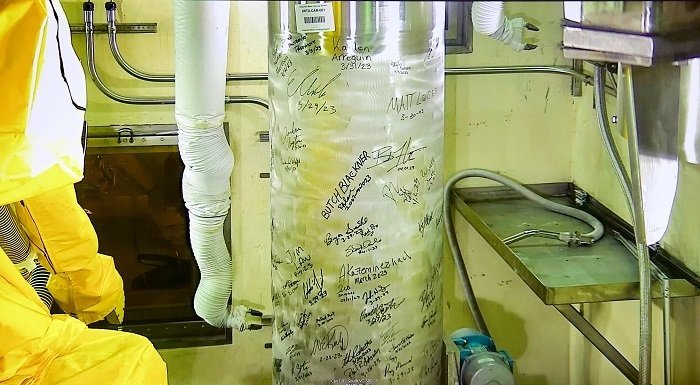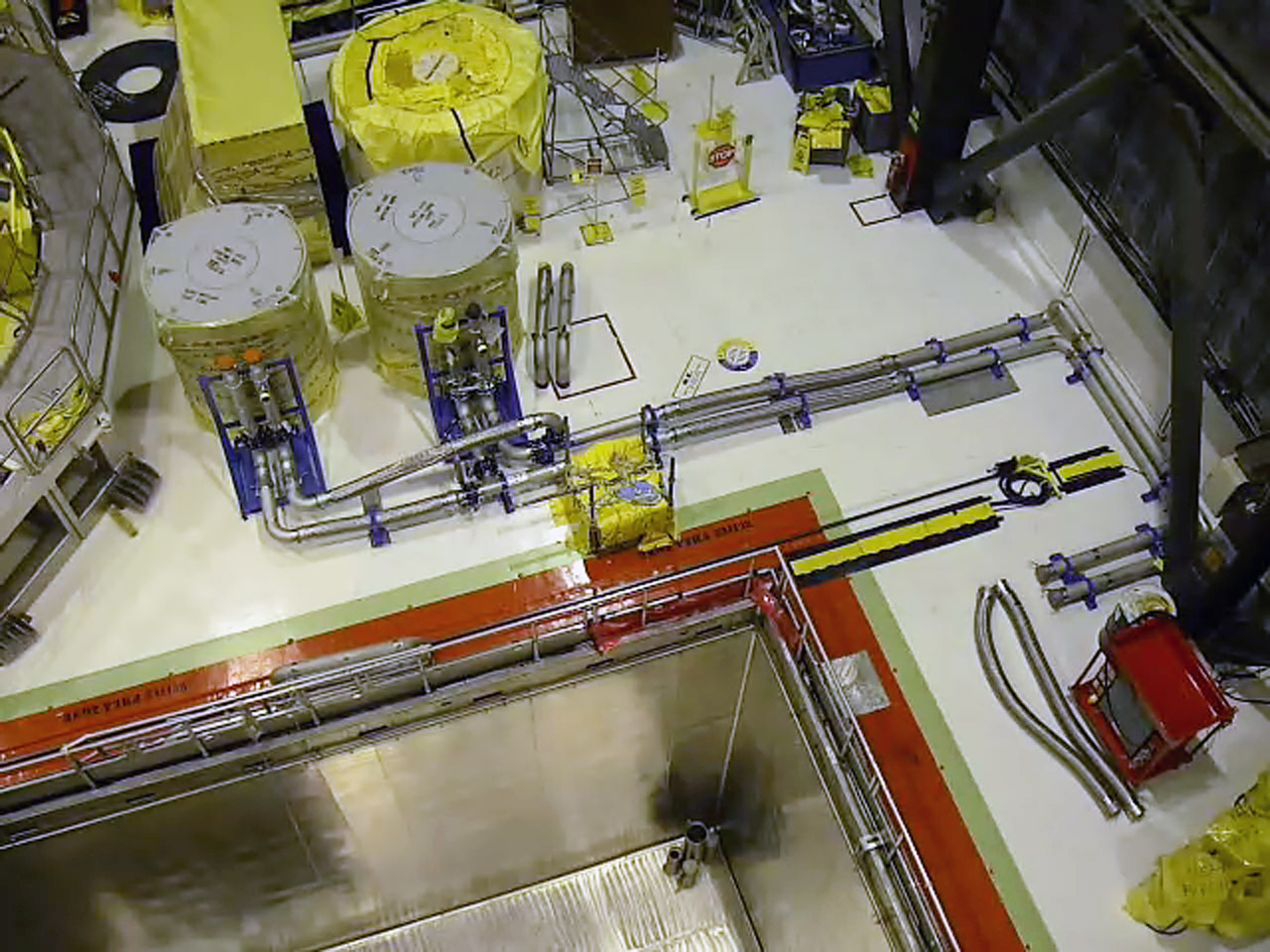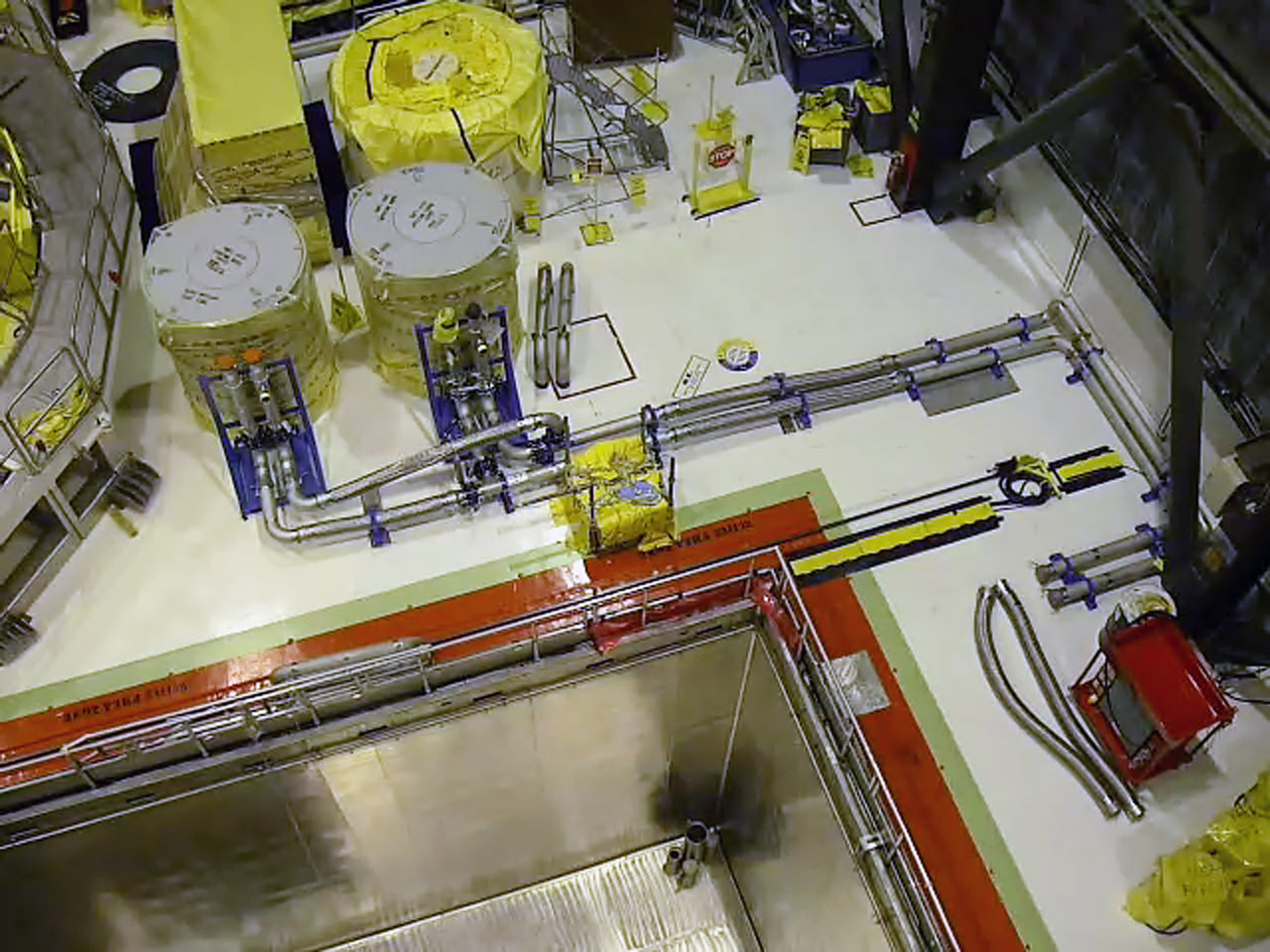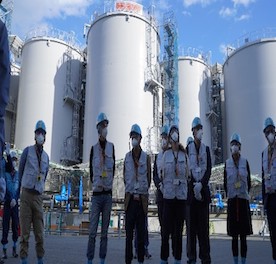Safely disposing of waste remains one of the key challenges for the nuclear power industry. We explore the benefits of dry storage with French operator Orano’s storage casks and canister-based systems and compare the benefits of the two interim methods – “wet” and “dry” storage.
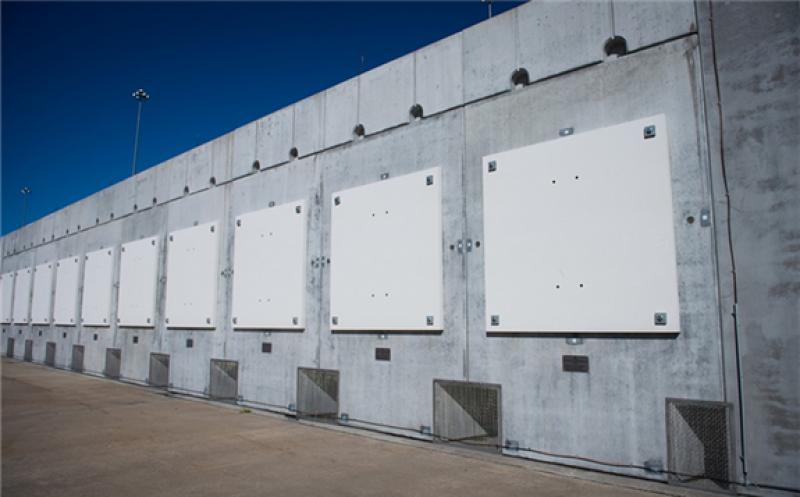 A NUHOMS storage installation. Source: Orano Group
A NUHOMS storage installation. Source: Orano Group
With many regions around the world preparing for the decommissioning of nuclear stations, there is a growing demand for efficient waste management facilities in the industry.
A recent study by Oak Ridge National Laboratory has shown that various types of interim storage sites are needed to save the US Treasury $15bn by 2040, $30bn by 2050, and $54bn by 2060, as more decommissioning activity is scheduled to take place in the country over the next few decades.
When used fuel is taken out of a reactor, it is both hot and radioactive and requires storage in water to allow the fuel to cool. The fuel can then be kept in wet storage long term or transferred into a dry facility after a period of initial cooling.
Entirely relying on wet spent fuel storage as an intermediate step in tackling used nuclear fuel is widely practised around the world, including in the UK, with countries implementing a “closed fuel cycle” strategy, which includes reprocessing and recycling in wet conditions.
Some countries, such as Sweden and Finland, store all their spent fuel inventory in wet conditions until spent fuel meets the requirements for final disposal. Others, like the US, Canada, and Germany move the spent fuel to dry conditions after the initial wet cooling period.
While wet storage has proven its value over time, the newer technique, dry storage, has recently gained more popularity in some regions, despite still needing to prove its strengths as a safe and reliable storage method worldwide.
Wet storage in the UK: a demonstration of flexibility and reliability
Wet storage as an intermediate step consists of storing waste materials underwater so they are cooled and their radioactive properties dispersed, before being disposed of in a conventional fashion.
As Sellafield chief operating officer Rebecca Weston shared during the 2020 IAEA Scientific Forum, the UK is currently building Advanced Gas Reactors (AGR), which represent generation II of British gas-cooled reactors, developed from earlier generation I Magnox gas-cooled reactors.
As part of the nuclear decommissioning authority in the UK, Sellafield has been involved in the preparation of thermal oxide reprocessing plants receipt and storage ponds, reconfigured to act as an interim store for remaining spent fuel within the UK, where the AGR fuel will be stored for the next 80 years.
Wet storage not only supports the UK storage strategy that the Nuclear Decommissioning Authority has laid out, but the method demonstrates other significant benefits.
“One of the advantages of wet storage within the pond is that there is easier access to the fuel as opposed to within dry storage casks or within new facilities. It allows for easy access for detection of issues. And it’s certainly an area where the UK has significant experience and knowledge in storage of that wet fuel to date,” Weston said.
In addition, the wet storage approach stands out for being flexible, with Weston adding: “It’s also important that the wet approach, and utilising existing facilities, allows us to be flexible for future strategies, whether that’s a changing stance around the fuel cycle or being open to future innovations around either drying or long-term storage of nuclear fuel.”
In terms of innovations delivered to support the wet storage strategy, the team has changed the pH over time to a more alkaline position as a corrosion inhibitor.
During her speech, Weston also noted that irradiation conditions vary between different types of reactors, for example, light water reactor and advanced gas cooled reactor fuels. This has an impact not just on storage regimes, but on monitoring and sampling regimes that are adopted for different types of fuel.
Orano enhancing dry nuclear storage facilities
Despite existing challenges, the benefits of dry storage have come to the forefront over the last couple of years.Taking a different approach to the UK, the US Nuclear Regulatory Commission has concluded that spent fuel storage in pools and in storage casks is both safe and secure. For this reason, much of the US’s used fuel, over 70,000 tons, is currently stored in interim storage pools and casks at nuclear power plants throughout the country. Dry nuclear storage is now rising in popularity almost four decades after it was first established.
After spent nuclear fuel has already been cooled in a fuel pool for at least one year, and often as much as ten years, it is then placed in dry storage facilities. This complementarity of wet and dry storage has allowed for several nuclear stations from the 2000s onwards to be shut down and safely decommissioned.
Some of the countries which have incorporated some form of dry waste storage to date include: US, Canada, Germany, Switzerland, Spain, Belgium, Sweden, Japan, Armenia, Argentina, Bulgaria, Czech Republic, Hungary, South Korea, and Lithuania.
One of the leading dry nuclear storage companies in the world and the first dry storage designer to work with the US Nuclear Regulatory Commission, Orano has been developing dry storage technologies for used nuclear fuel assemblies for approximately 40 years.
The company has successfully designed and certified both metal storage casks and canister-based storage systems. This is all alongside their newest NUHOMS system of individually stored and welded canisters, which are horizontally placed inside heavily shielded square concrete modules on used fuel storage pads at reactor sites.
Orano’s most advanced large capacity extended optimised storage canisters are now licensed to store used fuel with high burnup characteristics and up to 50kW high heat load, the highest in the industry (the prior level was 34kW).
As interim dry storage of used fuel on reactor sites was extended beyond the initial 20-year licensed period, Orano has successfully extended the licensing period for the NUHOMS onsite dry storage system to 60 years.
Along with this, Orano has also reduced the amount of required onsite dry storage pad space by 45% for the same amount of fuel by developing two-tiered MATRIX dry storage modules, which help utility customers to avoid expanding their dry storage facilities, saving additional costs.
Advantages and challenges for wet and dry nuclear storage
Although the availability of dry cask storage does not eliminate the need for initial pool storage at operating commercial reactors, the inclusion of dry storage as a further intermediate stage prior to permanent disposal could be much cheaper according to experts.
Wet storage has long been known to use a substantial amount of energy and in comparative research published at the Annals of Nuclear Energy journal, ‘Cost comparisons of wet and dry interim storage facilities for PWR spent nuclear fuel in Korea’, wet storage was found to be the most expensive solution for decommissioning spent nuclear fuel from a pressurised water reactor in comparison to three dry storage concepts.
This shows that if the additional step of dry storage is added, companies could benefit from reduced maintenance costs.
Orano chief technical officer Prakash Narayanan shares that another considerable advantage of dry storage is its expandable ability: “Wet storage capacity at nuclear power plants is limited and cannot be significantly increased.”
“Dry storage offers an important advantage with modular, expandable storage to support the continued, long-term operation of the nuclear energy facility. Transferring quantities of used nuclear fuel assemblies from wet storage in the reactor building pool into large capacity, sealed dry storage canisters and then placing the canisters into dry storage modules in a separate dry storage facility provides many benefits to the energy company and surrounding community.”
However, opponents of the dry storage method have raised concerns about the dangers of transporting volatile nuclear waste for dry storage and the radioactivity levels that workers are exposed to, as well as the risk of canisters opening and leaking content.
By comparison, wet storage does not require the spent fuel to be moved as it stays within the pond long term, providing easier access to the fuel that allows for rapid detection of issues.
In response, dry storage proponents insist that the fuel is not very volatile, canisters are welded shut, and advanced ageing management tools are being developed for safe inspection of the canisters in dry storage.
Looking ahead in the future of decommissioning, Narayanan says that: “For greater economic efficiencies, fuel assembly designs are becoming more robust and less prone to fuel failure, [in order to] to provide increased operating power with increased initial enrichment and higher burnups.”
While this could create new challenges to managing these assemblies, he is confident that new dry storage systems are already capable of addressing this future industry need.
Whether dry storage will gain enough prominence to become as popular as wet storage around the world remains to be seen. However, one thing is for sure, tackling the nuclear waste problem will become one of the most important steps towards the clean energy future, which will require substantial effort, regulation, and financing.



